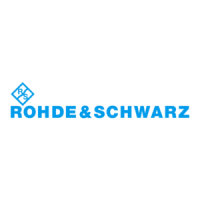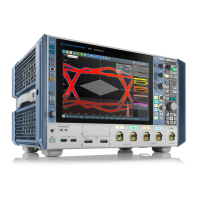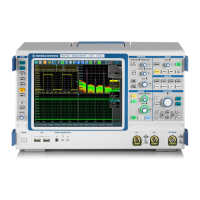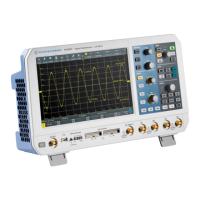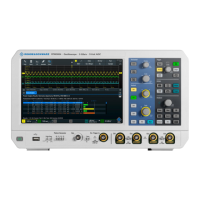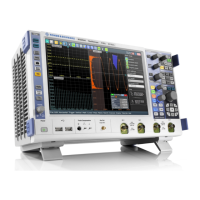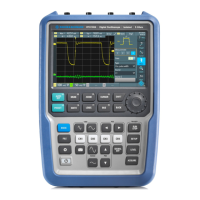Acquisition and waveform setup
R&S
®
RTE
175User Manual 1326.1032.02 ─ 20
RT-ZS single-ended active probes and RT-ZD differential active probes provide special
features for easier use and precise measurements. These special features are not
available on RT-ZSxxE probes.
●
The micro button on the probe head remotely controls important functions on the
instrument, like running and stopping the acquisition, autoset, AutoZero and setting
the offset to mean value.
●
The R&S ProbeMeter measures DC voltages between the probe tip and the
ground connection with very high precision. The result is displayed on the instru-
ment's screen. So you can check DC voltages with different levels without having
to adjust the measurement range of the oscilloscope. The R&S ProbeMeter also
measures the zero error of the probe to optimize measurement results at small sig-
nal levels.
When you connect an R&S RT-ZSxx active probe to a channel input of the R&S RTE,
the oscilloscope recognizes the probe. It reads the identification and calibration data
from the probe box and shows the result in the "Setup" and "Probe Attributes" tabs.
This data together with the deskew time for a given channel is stored and processed
by the R&S RTE. If you connect the probe the next time to the same channel, the infor-
mation is fetched and used.
Differential active probes
Differential active probes are designed to measure signals that are referenced against
each other, and voltages that are not references to ground, for example twisted-pair
signal lines. The R&S RT-ZD probes are differential probes with high input impedance,
they can be used to measure voltages between any two test points.
Compared with two-channel measurement setup with single-ended probes, the mea-
surement with differential probes is symmetric due to the same amplification and cable
length on both paths. It is also immune to interference and noise and occupies only
one input channel.
A differential probe has three sockets: the positive signal socket (+), the negative sig-
nal socket (-), and the ground socket.
Multiple input voltages can be defined for a differential probe:
●
Differential mode input voltage (V
in
, V
dm
)
Basics
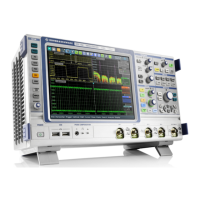
